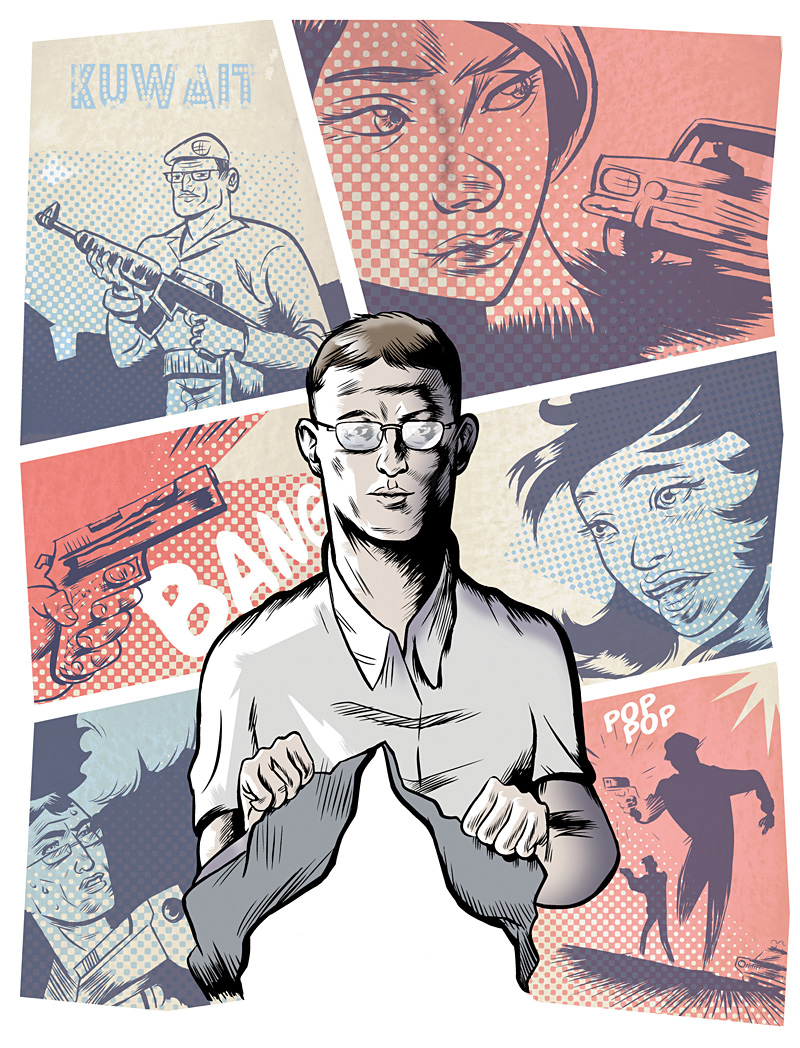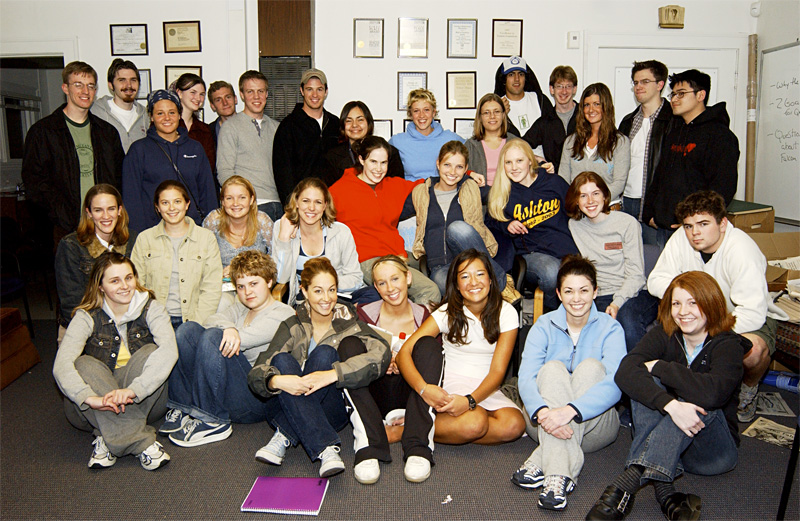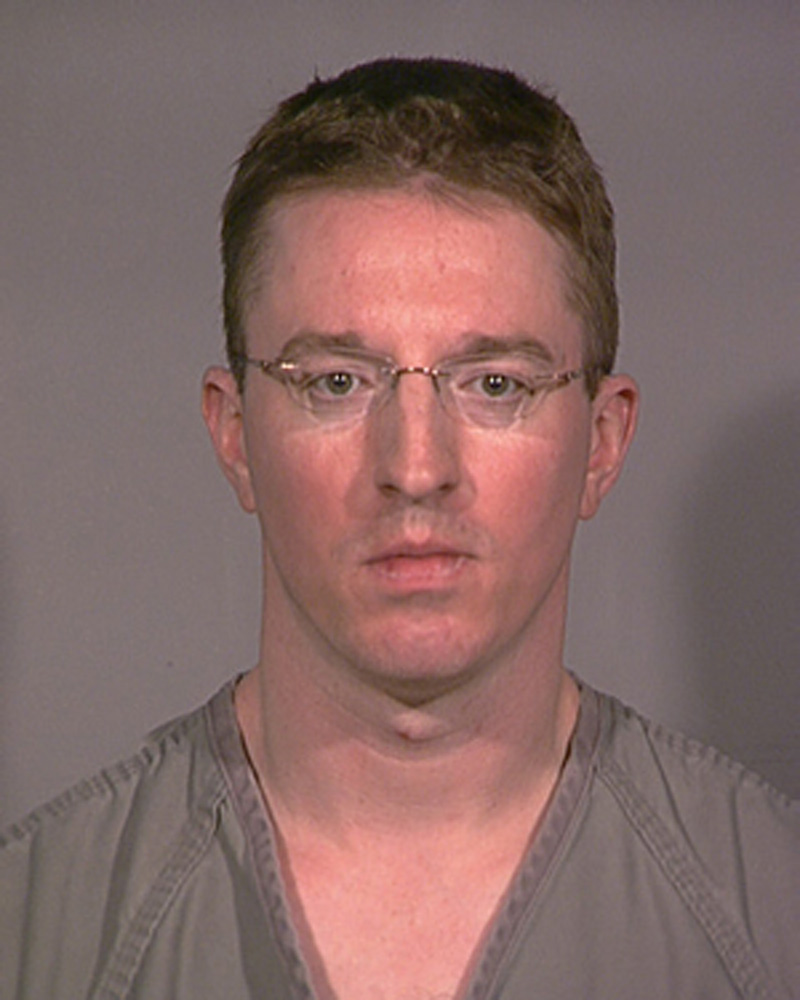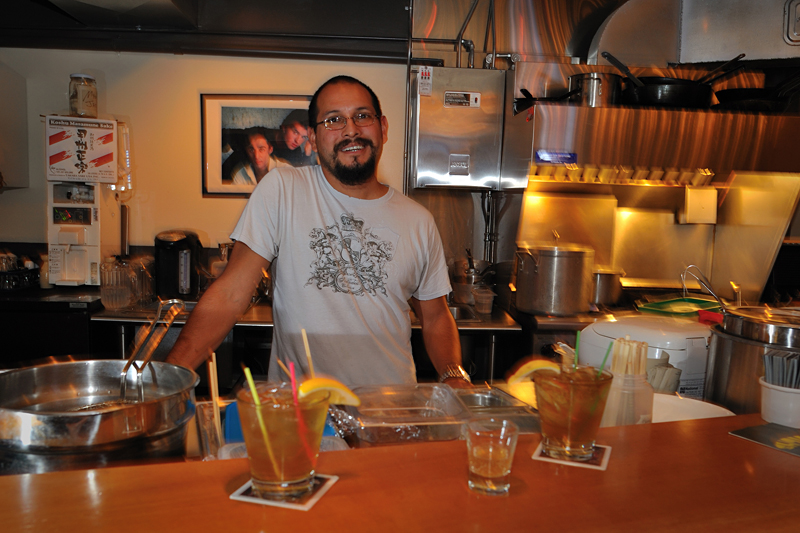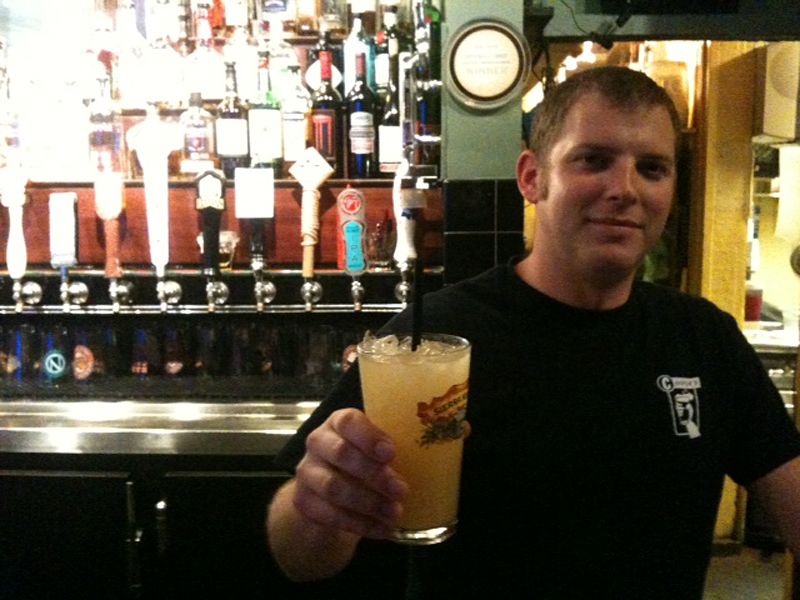The last thing Cindi Paulson remembers telling her stepdaughter Jennifer Paulson was to stay out of her apartment. Jed Waits, a man who had pursued Jennifer since college, had been arrested the Monday before for violating a restraining order she had taken out against him.
Jennifer, 30, assured Cindi she would stay with her mother and stepfather, but she still intended to go to work the next day as usual. “I know she was fearful, but she continued with her life anyway,” Cindi says.
That night, Jennifer asked her mom to pray for Jed, also 30, Cindi would later learn. “She wasn’t just mushy compassionate,” Cindi says. “She lived her compassion.”
Jennifer arrived at Birney Elementary School in Tacoma, where she taught special education, around 7:30 a.m. on February 26. As Paulson inched toward the building’s entrance, Waits walked up behind her, pulled out a gun, and shot her, killing her almost instantly.
A witness told reporters that he heard three gunshots and the sound of a woman screaming. An AP photo from the crime scene shows a body draped in a tarp and a pair of red shoes sitting beside the body. The witness then saw Waits jump into his car and take off. Someone called 911 and a Pierce County deputy stopped his car outside a day-care center. Waits allegedly emerged from the car firing a semi-automatic weapon.
“We had a short gun battle with him and he lost and died,” Sheriff’s Office spokesperson Ed Troyer says by phone.
But the Pierce County Medical Examiner’s office subsequently determined that, in fact, Waits killed himself. While he was hit by the deputy, a bullet to the head from his own gun ended his life.
More than 1,600 people attended a memorial service for Paulson at Life Center Church in Tacoma on March 2. An elementary school across the street from her parents’ house planted a tree and teachers from Birney are raising money to have a mural painted, all in her honor.
For Waits, there were no obituaries or funeral notices. But former friends and acquaintances have expressed shock that Waits could have done such a thing.
His college roommate, Mark Frame, says that when a friend called to tell him what had happened, his first response was “I don’t know him.”
“Seriously, I was like, ‘I know a Jed,'” Frame says now. But the scowling face of the killer being shown on the news was not the awkward student he remembered.
“That’s definitely not the Jed that I knew,” seconds Dwayne Smithgall, an associate pastor at Mercer Creek Church in Ellensburg, where Waits grew up. He recalls Waits as an artistic kid always willing to lend his talents in the form of promotional flyers and posters for the youth group.
I can understand their shock. I graduated from Seattle Pacific University in 2003, the same year Waits did. I was in Spokane with my family at the time of the shooting. Given the small size—around 600—of the classes at SPU, my mom immediately asked if I’d known Paulson. The name and face were familiar; she was a year ahead of me, and we had a few mutual friends. But beyond that I knew nothing about her.
The name that rang a bell as I watched the news was Waits’. It took me nearly a week to place it. Finally it clicked: The year I edited SPU’s student newspaper, The Falcon, Waits was on staff as a cartoonist. He penned a weekly comic strip and occasional editorial illustrations. And while he had his quirks, he was a friendly face around the office and generally made deadlines, a prized quality in student-newspaper staff members. He’s shown with a broad grin, eyes caught in mid-blink, in the staff photo on my dresser. If I were to compile a top-10 list of people I knew in college who might someday commit murder, Waits wouldn’t be on it.
But apparently Waits had another side. Records from his two years in the Army National Guard show that he had been disciplined for spitting on other soldiers and fighting with superiors. He finally went AWOL while deployed in Kuwait, and was eventually discharged in part on the basis of a disturbing mental evaluation.
So while I may have been stunned when I realized that the Waits who had shot and killed Paulson was the same one I had known, fellow soldier Art York wasn’t. Hearing the news of Paulson’s death, York, speaking by phone from a veterans hospital in Arizona where he is recovering from a scorpion sting in Iraq that damaged his leg and foot, says, “I was shocked, but I wasn’t surprised.”
Frame was close to Paulson, much closer than he was to Waits. Paulson and Frame met in 1998 at freshman orientation. They hung out for hours, he says. And he developed a pretty serious crush.
But Paulson had read Joshua Harris’ I Kissed Dating Goodbye, a book which argues that not only should faithful Christians not have sex before marriage, they shouldn’t casually date either. “I didn’t understand, but I respected it,” Frame says. “We remained really good friends all the way through college.”
Cindi Paulson says her stepdaughter never had a boyfriend in college. Instead, she found other ways to occupy her time. Her dad says she took 20 credits each quarter, rather than the requisite 12 for full-time status. On top of that, she worked in the school cafeteria, Gwinn Commons.
Paulson’s roommate Sarah Clark says that what really drew people to Paulson was her kindness. Paulson spent two summers working at Urban Promise, a Christian nonprofit in Wilmington, Del., that runs after-school programs and summer camps for low-income kids in the hope of helping them get to college.
“She had a passion for kids that were low-income, minority, at-risk,” says Clark, who taught 3rd and 4th grade in Newark, N.J., before moving to Portland with her husband. “She inspired me to go in that direction.”
“Just from knowing Jenny, I know that she would befriend anyone,” adds Frame.
Paulson’s friendly acquaintances would come to include a transfer student who came to work with her in the school cafeteria in the spring of 2002. His name: Jed Waits.
Darcy Wytko was one year behind Waits at Ellensburg High School. They weren’t close, she says, but they had the same circle of friends, and he wasn’t the dark and disturbed person lurking in the hallways that one might expect upon hearing about his crime.
“He didn’t wear trench coats, he wasn’t threatening to bomb people,” Wytko says. “He was never anything but nice to me.”
Waits got involved in the drama department, performing a small part in the play I Remember Mama, Wytko recalls. He also drew cartoons for the school paper and yearbook.
He became a leader in the Mercer Creek Church youth group as well. Waits would meet once a month with Smithgall and other students to help plan events or talk about how the other kids were doing. “He was respected by his peers,” Smithgall says.
Like Wytko, Smithgall remembers Waits’ cartooning. He kept a poster, with caricatures of actors, that Waits did when they were trying to recruit people to sign up for a drama group at the church. “I could share an idea, and 10 minutes later he had it on paper,” Smithgall says. “He had such an incredible gift.” Smithgall adds that Waits was a devout Christian and “very knowledgeable of the Bible.”
By coincidence, one of the first people Waits met when he transferred to SPU from Central Washington University in 2002 was Paulson’s friend Frame. The two had neighboring bedrooms and a shared living space in one of the dorms. Frame says he isn’t entirely sure why Waits picked SPU for his second two years of college, except that “he wanted to go to a Christian university.” Frame describes Waits as “a little bit socially awkward in a way. He’d be trying a little too hard with people.”
Frame says that Waits was the kind of person who took a joke too far, by turning it mean. “Or he might try to come into a conversation he wasn’t involved in,” Frame adds. But that hardly made him seem potentially murderous.
Waits would often talk about the comic book he was working on, Frame says. He created a character based on Captain Ahab, who travels to a deserted island and finds treasure—only to end up alone. Online, Waits attempted to sell a complete graphic novel featuring his Captain Ahab character, whose hunts for treasure end at a door to “a crypt, cold and aloof.”
At theouthousers.com, a comic-book-forum website, user Jude Terror posted the novel in its entirety, saying the novel “offers a chilling look into the obsessed mind of a killer.”
No one dies in the book, though. In fact, there is no violence of any kind. But a commenter posting under the handle BubbaKanoosh responds to Terror’s post by saying “you can tell this guy was pretty fucked up by these drawings, IMO.”
But Frame says he didn’t see anything sinister in them. “Comic-book characters overcome their own demons or obstacles all the time,” says Frame, a former comics fan himself.
The recollections of Wytko, Smithgall, and Frame reflect my own memories of Waits.
From fall 2002 through the following spring, Waits wrote a weekly comic strip for The Falcon called Outcasts. One strip features a tall, blond protagonist—clearly meant to be Waits—talking to a friend. Joking about the obnoxiously couple-happy campus and SPU’s notorious two-to-one female-to-male ratio, the protagonist says, “I dunno which is worse, man, to be totally isolated from women, or to be surrounded by them and not having a chance with a single one.”
In hindsight, it’s easy to read the strip as evidence of a lonely reject who would later obsessively stalk someone, but many of us on the newspaper staff were similarly put off by the drive to the altar our fellow students seemed to have. To us, it was funny and relatable, not alarming.
Waits did occasionally exhibit a deeply religious streak. He once devoted a series of strips to a character he called “The Vaquero,” who shows up in a Southwestern town and is shot by the local sheriff. The Vaquero is saved by a Bible he is carrying, and the remorseful sheriff converts to Christianity.
Many of us on the liberal-leaning newspaper staff didn’t see eye-to-eye with Waits. But at a Christian school where the more fervently devout students publicly committed to not masturbating and a speaker once came to insist that gay people could be made straight with therapy, Waits’ strips hardly portrayed an extreme viewpoint.
Frame didn’t introduce Waits and Paulson, but being cafeteria co-workers and having mutual friends, they ended up in the same social circles. Clark has two distinct memories of seeing the two together, neither a good one.
Once she and Paulson were at a friend’s apartment and Waits showed up. Afterward, says Clark, “We remembered thinking that Jed had said lots of rude comments and made himself unlikable.”
Another time they were all at dinner with friends. Clark can’t remember what Waits said, except that he “kind of attacked [Paulson] verbally.” She burst into tears and the dinner’s host reprimanded Waits.
It wasn’t the only time Waits was uncharacteristically abrasive. Just before leaving SPU in December 2003, Waits wrote an angry editorial in The Falcon (which I no longer edited), railing against what he saw as a hypocritical student body:
“To me, SPU is essentially a playground for spoiled, rich, white quasi-Christians in which students conform to an institutionalized form of Christianity that is—with all intents and purposes—borderline communist, with the ‘state as God’ being, of course, SPU,” he said. When I read it, I was surprised. It was a dramatic departure from the easygoing guy I remembered from the office.
No one who knew Paulson seems to have known anything about Waits’ developing obsession with her while in college. Frame says that though he lived with Waits in a dorm suite and for one summer in an apartment off campus, Waits never expressed any interest in Paulson. The two men lost touch after Frame graduated.
Clark doesn’t remember hearing about him from Paulson beyond the occasional and awkward encounters she described. And Paulson’s father, who can quickly name many of his daughter’s friends, says he’d heard nothing of Waits until two years ago.
But apparently he kept calling Paulson after college. In 2008, while seeking a restraining order against Waits, Paulson wrote that “about once a year, he would call me about 10–15 times in a day.”
Paulson doesn’t say what the calls were about, but notes that she would wait a few days to call him back “when I thought he was in a better state.” When she did call him back, she writes, her own call went unreturned. Then the phone calls from Waits stopped—at least temporarily.
Beyond Paulson’s references to phone calls from Waits, the only hint of his life between leaving SPU and enlisting in the Army National Guard in September 2005 is an e-mail sent by a family member, presumably a parent (the e-mail address and name are redacted), contained in records provided by the Guard.
Just before enlisting, Waits drove solo through Canada to Nova Scotia, returning to Washington through the northern United States. When he got to Deer Lodge, a small town 82 miles east of Missoula, Mont., he “decided he wanted to climb a mountain there,” the e-mail says.
Without any sense of the distance, Waits was not able to make it to the top before nightfall. So he decided to sleep there, sans shelter. He woke to the sound of thunder crashing, and told the e-mail’s author that he could see lightning approaching. He ran down with only the light of his cell phone to guide him. “He does risky stuff like this,” the e-mail reads.
The Guard released very few records pertaining to his first year and a half of service. There is a note that he was cited for “conduct non-becoming” once during his initial training. But during that time he also attained the rank of Specialist and received “Top Secret” clearance, according to records provided by the Guard. The Guard did not provide any additional information about Waits’ day-to-day duties. Specialist York, who knew Waits only for a couple of weeks when they bunked together in Kuwait, says the only thing he knows about Waits’ role was that with his clearance, Waits could go behind doors that York could not.
But in May 2007, as he prepared for a deployment to Kuwait, Waits started having strange outbursts. First came an incident in the laundry room at the Guard’s training center in Yakima. Waits brought his clothes in, but realized he had forgotten his soap. A non-commissioned officer was there, and Waits asked if he had any extra detergent. The officer said no, he had only purchased a one-load packet.
According to witness statements, Waits started “yelling about not taking care of the soldiers.” Someone else told Waits to drop—Army-speak for doing push-ups. Waits refused, and later, in the bunks, he body-checked the officer who hadn’t had extra soap.
Three days later, Waits was participating in a training exercise focused on how to quell a riot. He was supposed to be a rioter, and was specifically instructed not to throw rocks at other soldiers, his make-believe adversaries. Still, he did so, and spat water on one.
After those incidents, Waits was assigned to what are called “developmental counseling sessions” once a month. There are records of six sessions with three different officers. In a session dated July 18, 2007, Officer Samuel Summit told Waits to work on his organization skills to minimize his stress. “Stay on task. Don’t forget to finish something even when given a task that supersedes it,” wrote Summit, who did not respond to a message left on a listed home number.
Waits wrote in a box below the notes that he understood. In a later session, Waits elaborated further, saying, “I understand that I may not always get along with everyone— whether in my section or as a whole—but I guess it’s just how it is. My attitude is what I make it and I understand my need to communicate more effectively.”
But as his unit went through final preparations at Ft. Sill, Oklahoma, and finally left for Kuwait, Waits continued to have problems. Counseling records show that he snapped at a superior who asked him to resend an e-mail. Another time, a soldier encountering him at night at Camp Buehring in Kuwait offered a friendly “What’s up, Waits?”
“What the fuck are you doing here?” Waits responded, according to a written account of the encounter. “This is my barracks.”
Camp Buehring was where York says he first met Waits. Their acquaintance was short; the two shared the same barracks for about a week. “He was a friggin’ bully,” York says. He adds that no one wanted to sleep near Waits, and he was especially hostile to female soldiers.
One day, York says, during a heated exchange with Waits, York found himself on the verge of violence. “I was going to beat the shit out of him,” he recalls.
Weirdly, Waits’ response wasn’t to prepare to fight. Instead he backed down, and after that, York says, Waits started following him around camp. York says he took Waits under his wing for a few days, talking late into the night about life and especially women. Waits was desperate for a girlfriend, York says. He told Waits to be patient and give women a little more space. “If you want a relationship, it will come to you,” York recalls saying.
York was transferred to another camp a short time later. But Waits was spinning out of control. In the final “developmental counseling” report contained in records provided by the Guard, dated Oct. 9, 2007, he is cited for again disobeying an unspecified order. At the end of the form, in the section where Waits had in previous sessions responded with promises to try harder or musings on his attitude, there is only a note stating, “SPC Waits has refused to sign this counseling statement.” On Nov. 1, he was demoted to Private.
On Nov. 16, Waits left camp on a scheduled leave. He headed to Europe, where, according to the Guard’s records, he rented a car and made stops at a donut shop and McDonald’s restaurants in Germany and Amsterdam. On Dec. 5, his scheduled return date, he didn’t show up. His credit card showed more than $2,800 in unspecified withdrawals. At one point, he paid $194 to ship something, though the records do not indicate what.
Waits remained missing while his parents frantically e-mailed back and forth with the Guard. On Christmas Day he finally surrendered at Ali Al Salem Air Force Base in central Kuwait. By the end of the year, the Army had initiated formal discharge proceedings on the basis of his disappearance, his repeated problems, and a mental evaluation determining that Waits had a “personality not compatible” with the Army.
Dr. Daniel Yohanna, vice-chair of the Department of Psychiatry and Behavioral Neuroscience at the University of Chicago Medical Center, says he and his colleagues are seeing more patients coming out of the military. “Approximately one-third of people returning from Afghanistan and Iraq are showing mental-health issues,” Yohanna says. He adds that for someone like Waits, military life can trigger other mental illnesses, like schizophrenia, bipolar disorder, or severe depression, that tend to appear in a sufferer’s 20s. “Even though [Waits] may have been OK when [he] joined, the stressors of being in service may be enough for the disease to express itself,” he says.
However, Yohanna says that stalking isn’t typically a behavior associated with traditional psychiatric disorders. But he says that the recollections of people who remember him as a harmless if slightly odd person suggest that Waits “may have gotten sick from another psychiatric disorder in the natural course of his adulthood.”
Yohanna says that the military is getting better at identifying soldiers who show signs of mental distress. But those soldiers often don’t get treated, due to the “stigma about going to get mental-health services.”
Among soldiers who return with some kind of psychiatric problem, “there are higher rates of violence,” Yohanna adds, “although murder is a rarity.”
Back in Ellensburg after his discharge, Waits continued to struggle. He worked as the manager of an apartment building owned by his parents. In November 2008, he attacked the boyfriend of a tenant, saying that he needed to pay rent.
“He wouldn’t stop attacking (punching, kicking, and pushing) my boyfriend even when he knew police were on the way,” the tenant wrote in a statement, in which she asked that Waits be barred from her apartment until she was able to move. (The tenant didn’t show up at a hearing on the request and it was dismissed.)
Ellensburg police officer Ryan Shull says in his report that on arriving, “Waits immediately dropped to his knees, proned out, and put his arms away from his body.”
“Go ahead and arrest me,” Waits told Shull, according to a police report. He responded by telling Waits to stand up and explain the situation. Apparently Waits had seen his tenant’s boyfriend going in and out for a couple of days and confronted him, telling him that if he was going to stay there, he needed to pay rent as well.
The boyfriend said he wasn’t living there and had no intention of paying rent. “Waits told me he grabbed [the boyfriend] by the shirt and started hitting [him] many times in the head,” Shull writes in his report. “Waits told me he then kicked [him] many times in the groin area.” The attack left red marks on the man’s leg, shoulder, back, and neck, “and multiple red marks on the right side of his face,” Shull writes.
The Ellensburg City Attorney’s office initially charged Waits with misdemeanor fourth-degree assault. But in February 2009, a judge allowed Waits to escape prosecution, instead ordering him to perform 24 hours of community service and putting him on probation for one year. It was just over a year later that he was arrested for violating Paulson’s restraining order.
It was also after being discharged by the Guard that Waits began more aggressively stalking Paulson. In her 2008 request for a restraining order, Paulson says that in the spring of that year, he broke a two-year silence and called her. The conversation lasted about 15 minutes. She writes that the first call wasn’t harassing, but that she “was just surprised to hear from him after so long.”
But that May, Waits started calling Paulson multiple times a day, starting as early as 5 a.m. Once he drove to Birney Elementary, leading Paulson to call the police. One month later, he sent her roses and a stuffed bear at work.
“I call him to leave a message that he can never contact me again or I will file an order,” she writes in the 2008 request. Her principal also called the National Guard to report the incident, but by then Waits had already been discharged. In September 2008, Paulson drove to Birney and found Waits sitting in a car outside the school. She got out of her car, but he only watched her from his car, she says. The other faculty were aware of Waits and called the principal. As the principal and a custodian walked toward Waits’ car, he drove off. It was then that Paulson finally sought a restraining order.
For two years, things quieted down, according to the court record. But last Feb. 22, as she was leaving the school, Paulson once again saw Waits watching her from his car. She called the police and he was arrested. That night he made bail and Paulson started staying at one of her parents’ homes.
Then on the morning of Feb. 26, Paulson arrived at school, where Waits was waiting for her. After shooting and killing her, a witness named Omar Moreno told KOMO-TV, Waits ran to a tan sedan and drove off. Moreno ran to Paulson, where he found her bleeding from the mouth and dead.
Cindi Paulson says she believes that after being rejected by her stepdaughter, Waits wanted to take Paulson away from everyone: “If he couldn’t have her, no one could.”
Sipping tea surrounded by photos of their daughter and other children, Cindi and Ken Paulson are strikingly calm.
“God does not promise us a wonderful life,” Cindi says, explaining the peace she’s made with the tragedy. “We miss her terribly, [but] she is with the Lord.”
Cindi even goes so far as to say that she feels especially sorry for Waits’ parents. His father, Dennis Waits, told a KING-TV reporter immediately after the shooting that “we didn’t know this was coming.We are as shocked as you are.To be quite honest, I wished he’d used the gun on us, instead of [Paulson]. That’s how terrible we feel.” (Waits’ parents’ phone number is now disconnected, and they did not respond to a written request for an interview.)
The only time Cindi Paulson gives in to anger is when she talks about the restraining order. She says there should be a way to distinguish more standard domestic disputes from people who are potentially violent and dangerous.
The tragedy has marked people like Frame. He says he can’t think about his time at SPU without having the entire experience tainted by the murder. Paulson was one of his first friends, and the last person who Frame lived with became her killer.
Even after reading records detailing his disintegrating mental state while with the Guard, I can’t quite reconcile the easygoing cartoonist who came to our staff meetings every week with the man who killed Paulson. Whether or not we should have seen it, Waits snapped. And a woman who had devoted her fledgling career to helping kids with special needs lost her life.
